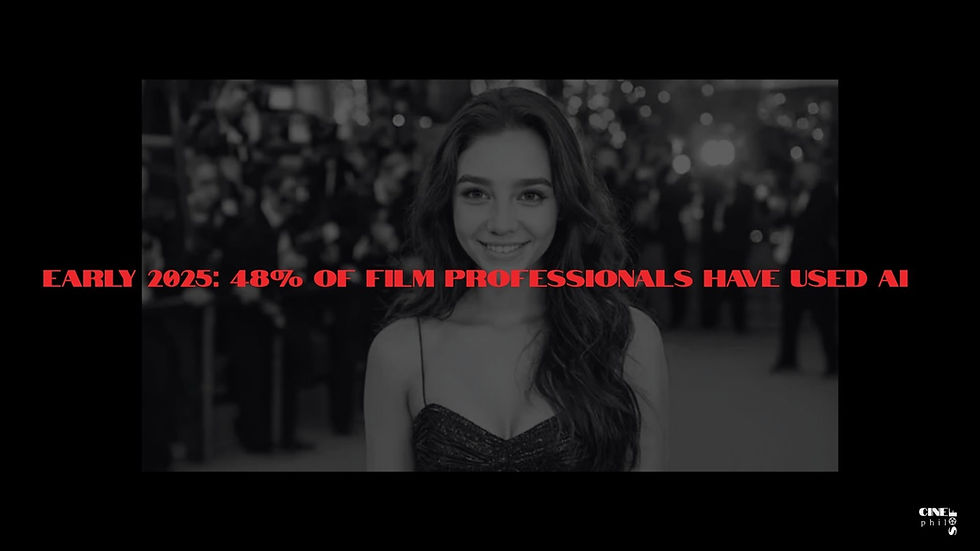Like Diamonds, Timeless Charm: Reflecting on 70 Years of Gentlemen Prefer Blondes
- Sofia R. Willcox

- Jun 30, 2023
- 3 min read
2023 marks the 70th anniversary of the summer blockbuster Gentlemen Prefer Blondes(Howard Hawks, 1953). The film was adapted from the 1949 stage musical of the same name. Both narratives draw from the homonymous novel by Anita Loos, published in 1925. Notably, there are distinctions that set apart each medium.
After seven decades, much like a diamond, the film still shines with timeless brilliance.
The musical comedy tells the story of camaraderie between Lorelei Lee (Marilyn Monroe) and Dorothy Shaw (Jane Russell). There is no rivalry between them, even though Mr. Esmond Sir (Taylor Holmes) tries to manipulate and incite competition. However, their support and friendship for each other remain paramount. This story also portrays female empowerment, as they stand together as co-workers, forming a strong bond that is mutually complementary.
Despite the waves of feminism over the years, there are still many filmmakers who employ the male gaze through various cinematic elements. This movie, originating from a pre-feminist era in the 1950s, brings a revolution to the female gaze, particularly through the character of Dorothy. With her ambitious pursuit of love, her body language and dialogues subtly convey her desires, especially with the Olympic team. It's worth noting, however, that the film was directed by a man. In some respects, the film deliberately embraces a sexual undertone as the protagonists utilize songs to express themselves, and their journey becomes symbolic of freedom.
Lorelei, on the other hand, is portrayed as a 'diamond-digger.' This characterization is evident through her dialogues and the iconic number 'Diamonds Are a Girl’s Best Friend.' Her portrayal is potentially ground-breaking—a woman driven by materialistic ambitions rather than romantic ones, defying the norms of her time. This portrayal can be seen as a form of protection against a sexist world. In her actions, she inadvertently contributes to the creation of the contemporary concept of the 'sugar daddy.’
The movie provides an authentic portrayal of Paris as the capital of fashion, even incorporating a mix of French and English when the characters are in the city.
However, it's worth mentioning that diamonds aren't exactly the movie's best friend.
Gentlemen Prefer Blondes perpetuates the 'dumb blonde' stereotype through the typecasting of Marilyn Monroe. Despite this, there are scenes where she subverts it, adding depth to her character with lines such as 'I can be smart when it's important, but most men don't like it' that was improvised by the Hollywood star.
The movie perpetuates a retrograde beauty standard. This is evident not only in the title itself, which implies a preference for blondes according to male desires, but also in the film's portrayal of Lorelei. For instance, scenes following her kisses with her fiancé include exaggerated sound effects to accentuate his passion. Additionally, a rivalry is depicted between her and Lady Beekman (Norma Varden), contrasting a young blonde woman with an older grey-haired one. Furthermore, there are instances where the film positions Dorothy as her shadow, almost embodying the concept of a 'designated ugly fat friend.'’

The musical comedy portrays marriage as the conclusion of a woman's career. Despite being successful entertainers, both protagonists even embarked on tours in Paris. Notably, Lorelei received support from her fiancé while facing disapproval from her father-in-law.
Both protagonists were driven by romantic motivations. Dorothy's ambitions, as previously mentioned, serve as a clear indicator of this, highlighted further by the visual dominance of the colour red. In contrast, Lorelei grapples with her best friend's values and her own emphasis on diamonds, which is ironic considering diamonds are traditionally associated with commitment.
It is worth mentioning that the film is a depiction of a specific time period, characterized by passive portrayals of women. Scenes where women wait at tables for men and a trip facilitated by men are indicative of this attitude. The presence of sexist jokes further reinforces this perspective. While the film introduces innovation in various aspects, it lacks diversity, with many minority characters remaining inexistent, a reflect of their invisibility in the shadows of the real world. Notably, the movie perpetuates this issue, exemplified by Piggy’s (Charles Coburn) mocking impressions of South Africa.




Comments